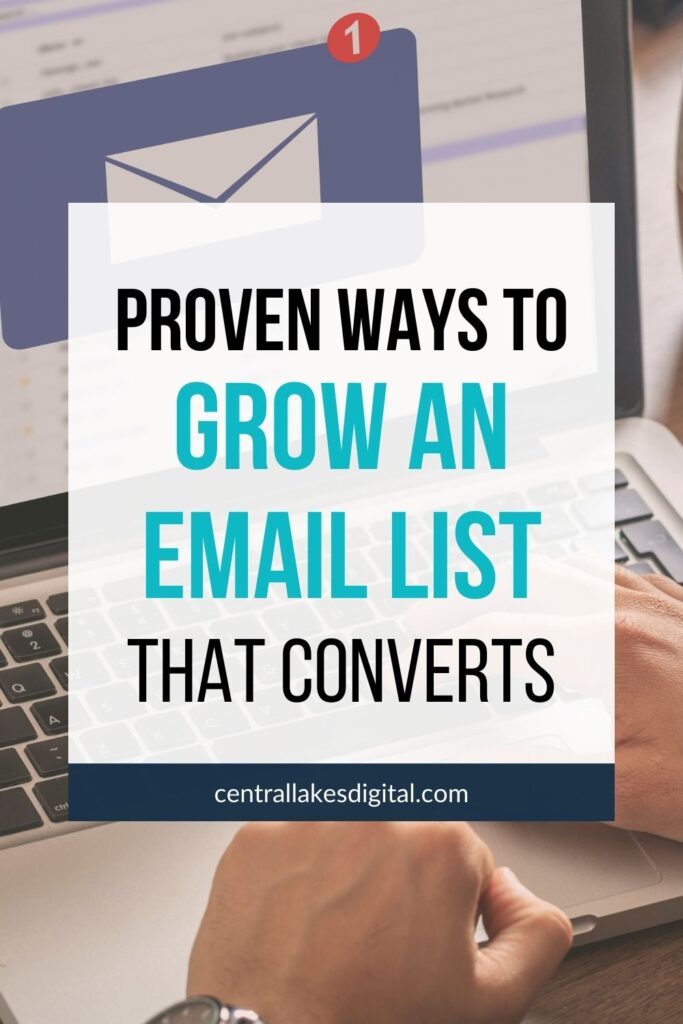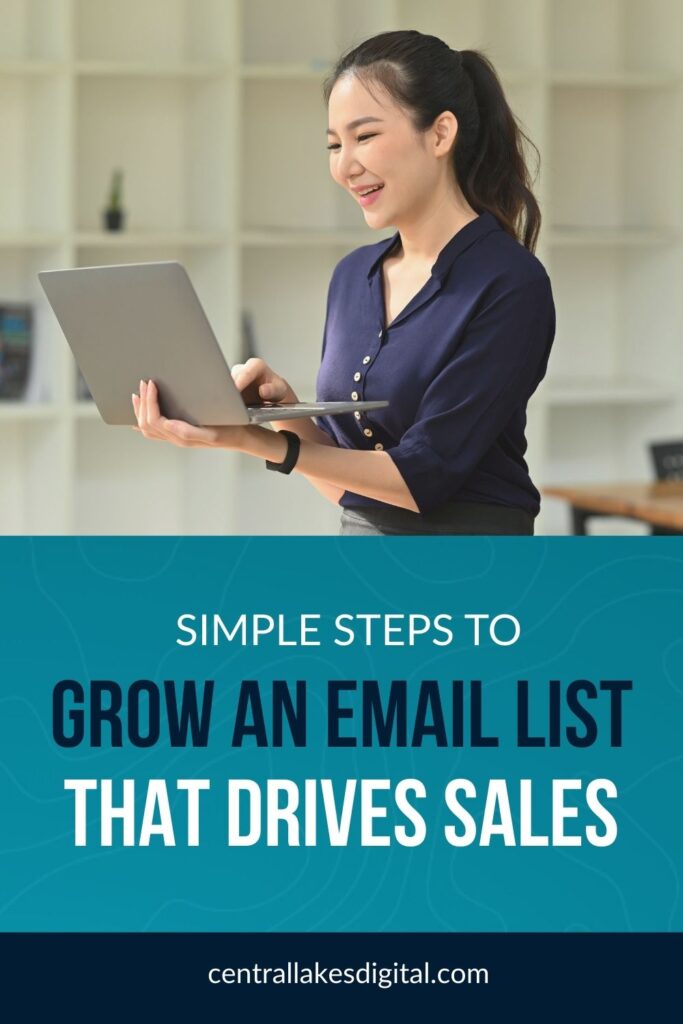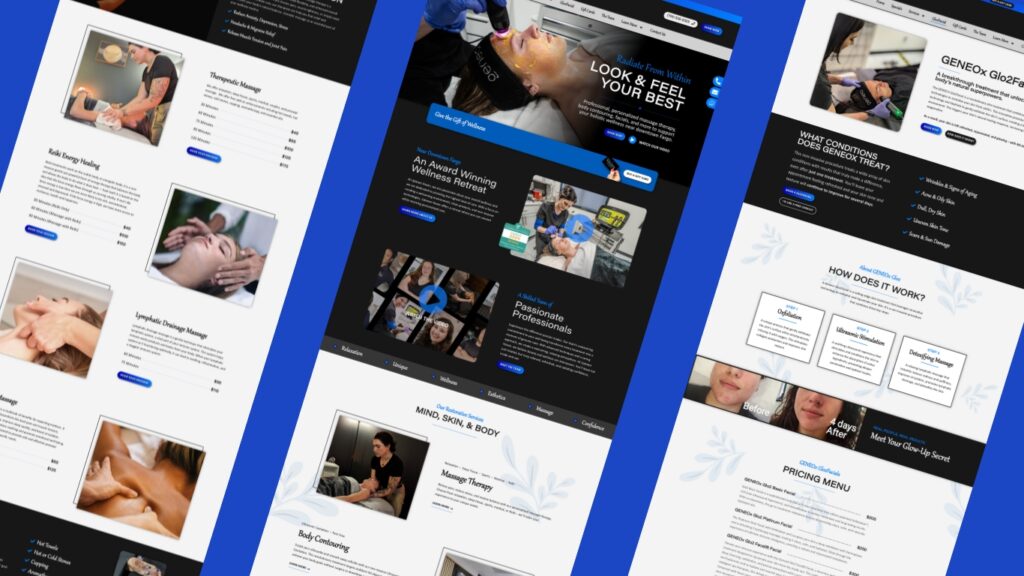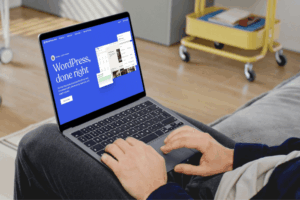In today’s digital landscape, social media algorithms change overnight, and paid advertising costs continue to rise. But there’s one marketing channel that remains consistently reliable: email marketing. When done right, email marketing delivers an average ROI of $36-$38 for every $1 spent, according to recent industry reports. The key phrase here is “when done right.”
At Central Lakes Digital, we’ve worked with businesses across industries—from ecommerce stores to fishing lodges to day spas—and we see the same mistakes repeated: building massive email lists that never convert, sending generic blast emails that end up in spam folders, or worse—having great products or services but no email strategy at all. This guide will show you how to grow an email list that not only expands in size but also drives real revenue for your business, no matter what industry you’re in.
Why Email Lists Matter More Than Ever
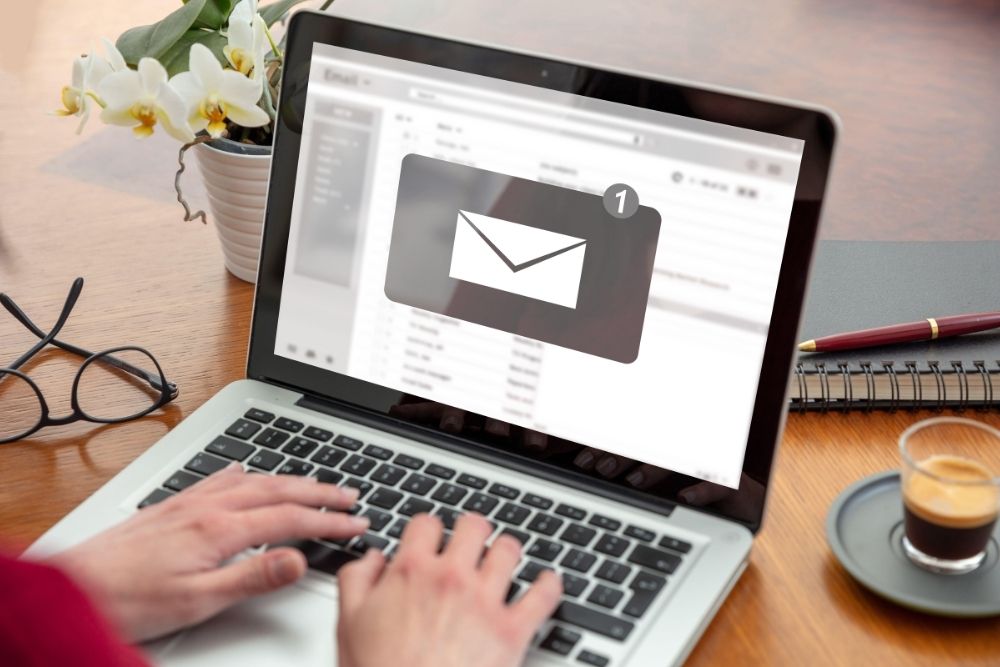
Your email list is the only marketing asset you truly own. Unlike social media followers or search rankings, your email subscribers are yours. You can reach them directly, without worrying about algorithm changes or platform shutdowns.
But here’s what most businesses get wrong: they focus solely on list size instead of list quality. A targeted list of 500 engaged subscribers will always outperform a cold list of 10,000 uninterested contacts. Quality subscribers convert into customers, recommend your business to others, and provide valuable feedback that helps you improve your offerings.
Email marketing also provides unmatched personalization opportunities. Whether you’re running an online store, managing a resort, or operating a service business, you can segment your audience based on their interests, buying behavior, and stage in the customer journey, then deliver highly relevant content that speaks directly to their needs.
Proven Strategies to Grow An Email List
Lead Magnets: Your Secret Weapon
The most effective way to grow an email list is by offering something valuable in exchange for an email address. This “lead magnet” should solve a specific problem for your ideal customer. Great lead magnets work across all industries:
For ecommerce businesses:
- Size guides or product selection quizzes
- Exclusive discount codes (10-20% off first purchase)
- Product care and maintenance guides
For hospitality and tourism:
- Local area guides and insider tips
- Packing checklists for your location
- Seasonal activity calendars
- Early access to booking specials
For service businesses:
- Free consultations or assessments
- Maintenance tips and care guides
- Before/after case study galleries
- Appointment booking incentives (10% off your first visit, new customers only)
The key is making your lead magnet highly specific and immediately useful. Instead of “Marketing Tips,” try “5 Email Subject Lines That Increased Our Open Rates by 67%.”
Strategic Website Integration
Your website should work as a 24/7 lead generation machine, regardless of your business type:
- Smart Popup Timing: Use exit-intent popups or time-delayed popups (after 30-60 seconds) rather than immediate popups that annoy visitors. Make sure they’re mobile-friendly and easy to close.
- Multiple Capture Points: Place opt-in forms in your header, sidebar, footer, and within blog content. For service businesses, add them to your “About” and “Services” pages. For e-commerce, include them on product pages and checkout.
- Content Upgrades: Offer specific lead magnets related to individual pieces of content, such as a detailed packing list on your resort FAQ page or a free sample meal guide download on a wellness blog about nutrition.
Leverage Giveaways and Contests
Running strategic giveaways can rapidly grow an email list, but choose prizes that attract your ideal customers. If you’re a fitness coach, don’t give away an iPad—give away a month or two of free personal training. If you run a restaurant, offer a private dinner experience rather than a generic gift card. This ensures you attract people genuinely interested in your services.
Paid Traffic That Converts
When organic growth isn’t fast enough, paid advertising can accelerate your list building. Focus on platforms where your ideal clients spend time:
- Facebook and Instagram ads work well for most businesses, especially ecommerce and local services
- LinkedIn ads for B2B companies and professional services
- Google ads targeting solution-seeking keywords related to your industry
Always send paid traffic to dedicated landing pages, not your homepage. These pages should have one clear goal: capturing email addresses in exchange for your lead magnet.
The Art of Warming Up Your List

Getting someone’s email address is just the beginning. New subscribers need nurturing before they’re ready to buy. This “warming up” process builds trust and positions you as an expert, whether you’re selling products, experiences, or services.
Welcome Series Excellence
Start with a simple 1-2 email welcome sequence:
- Immediate welcome with lead magnet delivery (e.g. free guides or downloads), a discount code, or giveaway signup confirmation
- Brand introduction covering what you offer, social proof from happy customers, and a soft introduction to your services
Keep it simple—most businesses don’t need elaborate 7-email sequences. You can combine these two aspects into one concise email as well. Focus on delivering value quickly and building trust through social proof and clear communication about how you help your customers.
Instead of immediately hitting your list with a sales pitch for your services or products, focus on helping your ideal customer by answering questions they may have when making buying decisions and providing value that helps them succeed. Share insider tips, industry insights, behind-the-scenes content, your latest updates, and actionable advice. When you eventually do pitch your products or services, your audience will be more receptive because you’ve provided value and shown them why you are worthy of their trust.
Grow an Email List with Cleaning and Smart Segmentation
A smaller, engaged list will always outperform a larger, disengaged one. Regular list maintenance is crucial for deliverability and ROI across all businesses and industries.
Remove Cold Contacts Regularly
Identify subscribers who haven’t engaged with your emails in 3-6 months. Send them a “win-back” campaign first—something like “We miss you! Here’s 20% off your next purchase” for ecommerce, or “Ready to book your next visit?” for hospitality businesses. If they still don’t engage, remove them from your main list. This improves your sender reputation, your open rates, and ensures you’re not paying for disinterested contacts.
Smart Segmentation Strategies
Divide your list based on:
- Purchase behavior (customers vs. prospects)
- Interests (different products, services, or experiences they’ve shown interest in)
- Engagement level (highly engaged vs. moderately engaged)
- Location (especially important for local businesses and tourism)
- Stage in customer journey (new leads vs. long-term subscribers)
Avoid the Spam Trap: Email Best Practices
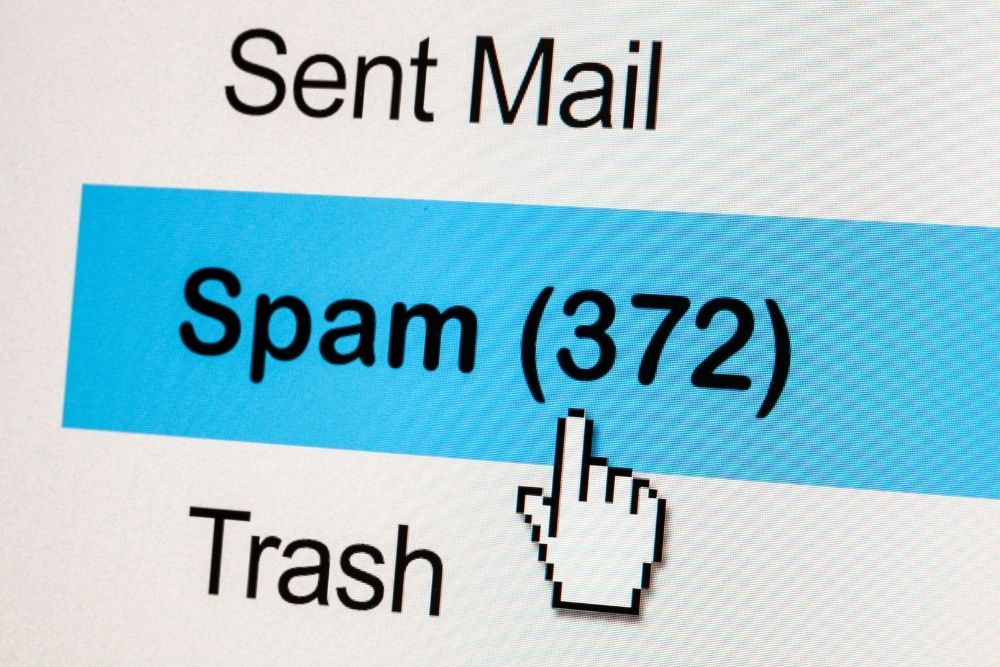
Nothing kills an email list faster than being labeled as spam. Here’s how to stay in your subscribers’ good graces:
Frequency That Works
Most businesses should email their list once a week or every other week, but this can vary based on your audience and content quality. Here’s a practical framework:
Minimum: At least 2-4 emails per month to stay top-of-mind without being forgotten.
Sweet spot: Every other week or once per week for most businesses.
Too Many: Daily emails only work for high-value content (like news, tips, or entertainment), most businesses should avoid daily sales pitches.
However, frequency matters less than consistency and value. If you send weekly emails that provide genuine value, subscribers will look forward to them. If you send daily sales pitches, you’ll quickly end up in junk folders with a high unsubscribe rate.
Subject Line Strategy
Your subject lines should be informative yet intriguing, regardless of your industry. Avoid spam triggers like excessive caps, too many exclamation points, or misleading claims. Instead, try:
- Curiosity-driven: “The mistake 90% of restaurants make with reservations”
- Benefit-focused: “Cut your morning routine in half”
- Personal: “I learned this the hard way…”
- Urgent (but honest): “Last chance: Early bird pricing ends tonight”
Content That Converts
Stop sending endless promotional emails. Follow the 80/20 rule: 80% valuable content, 20% promotional. But here’s the key insight: think of your emails as informing your buyers’ decision-making process. Your “valuable” content should answer the questions your prospects have when considering a purchase.
Your valuable content will vary by business type, but should always help customers make informed buying decisions:
For ecommerce businesses:
- Product education and styling tips (Answers: “How do I know if this will work for me?”)
- Customer spotlights using your products (“Do people like me use this?”)
- Seasonal trends and buying guides (“What should I buy right now?”)
- Size guides and fit information (“Will this fit properly?”)
For hospitality businesses (like resorts):
- Local area guides and what to expect (“What will my experience be like?”)
- Seasonal activity reports and conditions (“Is this the right time to visit?”)
- Guest success stories and photo features (“Will I have a good time?”)
- Packing lists and preparation tips (“How do I prepare for my trip?”)
For service businesses (like salons):
- Care tips and maintenance advice (“How do I maintain results between appointments?”)
- Trend forecasts and seasonal recommendations (“What’s the best look for me?”)
- Process explanations and what to expect (“What happens during my appointment?”)
- Before/after showcases (“What kind of results can I expect?”)
When you do send promotional emails, make them feel special. Exclusive offers, early access, or subscriber-only bonuses make people feel valued rather than sold to. If you send too many promotions too often, you run the risk of training your customers to wait for the next deal instead of buying at regular prices. When discounts become predictable, customers lose trust in your pricing and will simply hold off until your next “urgent” offer arrives. This constant promotion cycle also makes your emails feel spammy—if subscribers don’t want to buy now, bombarding them with endless “limited time” deals that aren’t actually limited will only annoy them. The result? Higher unsubscribe rates, poor sender reputation, and your emails landing in spam folders instead of inboxes.
Technical Tips to Grow an Email List and Improve Deliverability
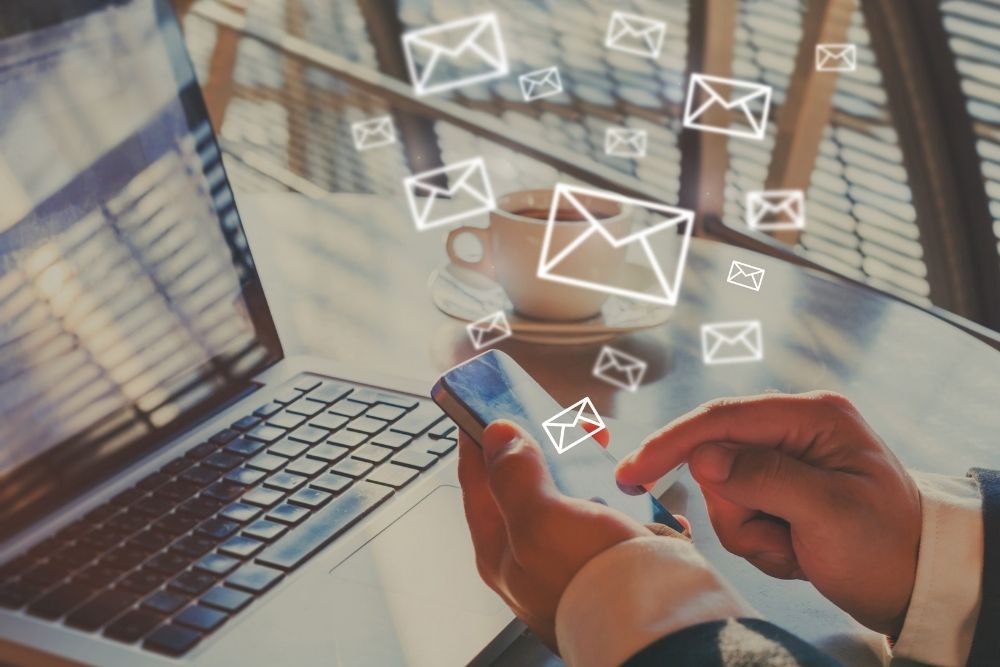
Even the best content won’t convert if it never reaches the inbox. Ensure strong deliverability by:
- Sending from an authenticated domain: send emails from your domain (e.g. email@yourbusiness.com) and ensure you have valid SPF, DKIM, and DMARC records set in your website’s DNS
- Using a reputable email service provider is also critical to success. For example, tools like ConvertKit can help maximize ROI while ensuring your emails land in the inbox and reach the right audience.
- Avoiding spam trigger words in subject lines and content
- Including a clear unsubscribe link in every email
- Monitoring your sender reputation and engagement rates
Track Performance: Metrics That Help You Grow an Email List
Focus on metrics that directly correlate with business growth, regardless of your industry:
- List growth rate: Are you adding quality subscribers consistently?
- Click-through rates: Are people taking action on your emails?
- Conversion rates: Are email subscribers becoming customers?
- Revenue per email: How much revenue does each email generate?
- Unsubscribe rates: Keep this under 2% to maintain a healthy list
Maximize Performance with Resend Campaigns
One often-overlooked strategy that can significantly boost your email performance is resending to unopens. Resending an email campaign can increase the open rate of your campaign by as much as 30%.
Best Practices for Resending:
- Wait 2-4 days before resending to give people time to check their email
- Change the subject line completely—try a different angle or benefit
- Send only to unopens from your original campaign, not the entire list
- Limit frequency to avoid annoying subscribers—once per campaign is enough
- Track performance to see if the resend strategy is working for your audience
A well-executed resend campaign can increase your total campaign reach by 15-30%, helping you squeeze more value from each email you send.
Your Email Marketing Action Plan

Building a converting email list takes time and strategy, but the results are worth it whether you’re selling products online, welcoming guests to your location, or providing professional services. Start by creating one compelling lead magnet relevant to your industry, setting up a simple welcome series, and committing to consistent, valuable content.
Remember, email marketing isn’t about quick wins—it’s about building lasting relationships with people who can become your best customers. Focus on serving your audience first, and the conversions will follow.
At Central Lakes Digital, we’ve helped businesses across industries—from online retailers to professional service providers—transform their email list into a profit generating machine. We’ve grown email lists to over 10,000 subscribers while maintaining open and click-through rates that remain above industry standards, often averaging above 50% open rates for our clients. The businesses that succeed are those that view email marketing as relationship building, not just another sales channel.
Ready to transform your email marketing strategy? The best time to start was yesterday. The second-best time is right now.
